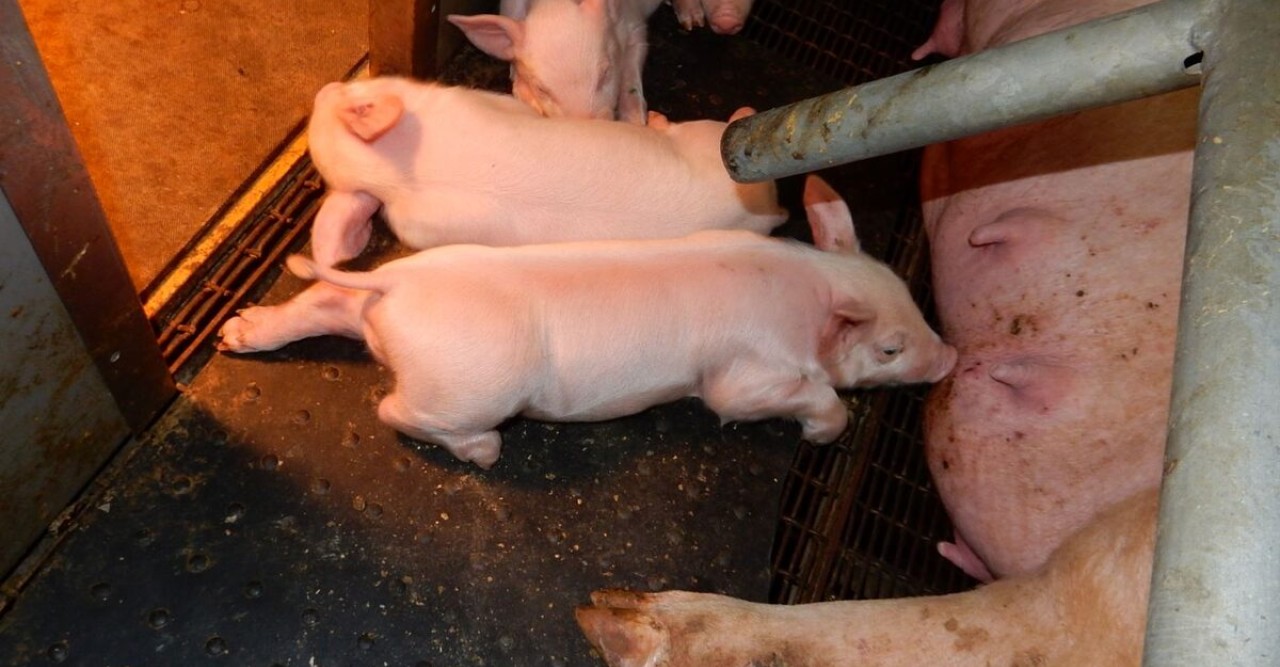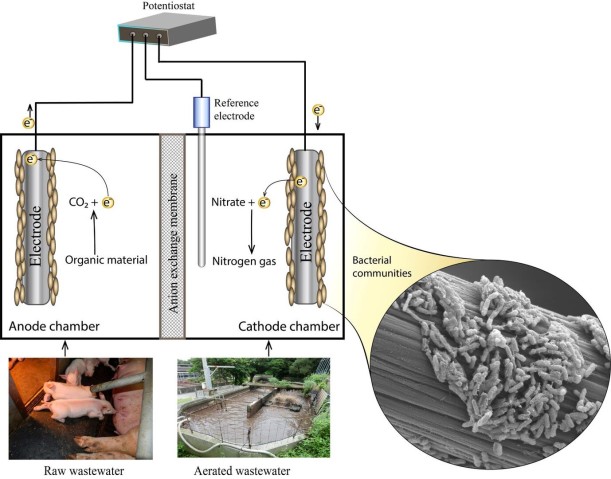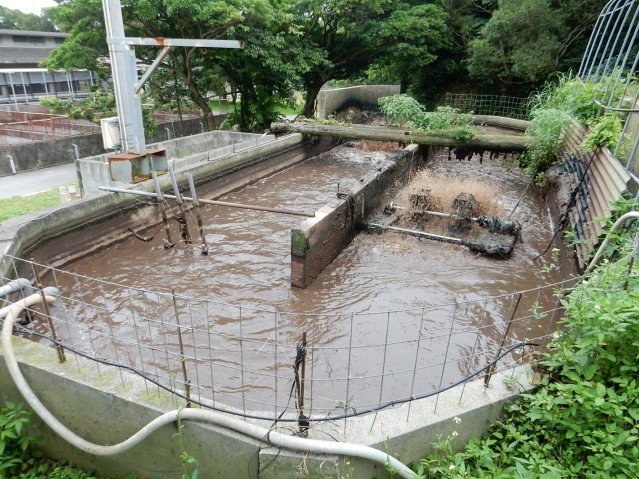Treating Agricultural Wastewater

Pig farming is an important part of Okinawa’s economy and culture. Pork is a staple in the local diet and is found in many dishes in traditional restaurants. However, pig farms produce large amounts of wastewater, which is harmful to the environment.
Nitrogen and phosphorus in wastewater have a major impact on the environment and human health when they are released untreated. The current technology that is widely used to treat wastewater is the activated sludge method (aeration). However, this technology does not remove nitrate and phosphate efficiently, and without proper subsequent advanced treatment these compounds remain in the wastewater. To tackle this problem, researchers from the Biological Systems Unit at OIST have created a new system for treating wastewater that is designed to be both low cost and low maintenance.
The technology uses a pair of chambers to treat two different types of wastewater in one system. In one chamber, raw swine wastewater is treated for the removal of odour, pathogens, and organic matter. In the other chamber, aerated wastewater is treated to remove excess nitrate and phosphate, utilizing the energy (electrons) generated during the process. The two chambers are separated by an anion exchange membrane.

The new technology relies on bacterial communities, which not only drive the treatment process, but also recover some valuable nutrients from the wastewater at the same time. It is a stark contrast to the traditional aeration system currently utilized by farmers, which mainly treats organic matter in the wastewater and converts the ammonium present to nitrate but does not treat the nitrate efficiently further. Read more about the new technology here.

After successfully trialling this system in the lab, the researchers set up an initial pilot experiment at one of the pig farms in Okinawa Prefecture Livestock and Grassland Research Center by working with the Okinawa Prefecture Environment Science Center and Okidoyaku. The Unit is grateful for the support for this project from the Academia-Government-Industry Consortia. The project was funded by Okinawa Prefectural Government and monitored for over a year. The work will be continued as a Proof-of-Concept program at OIST and an OPG Innovation System Construction Project.
Project Collaborators
- Mr. Kazeoka Masaki, Director, Life Science Section, Okinawa Prefecture Environment Science Center.
- Mr. Suzuki Naoto, Executive Director, Okinawa Prefecture Livestock and Grassland Research Center
Project Publications
- Prokhorova, A., Kainuma, M., Hiyane, R., Boerner, S., Goryanin, I. (2021) Concurrent treatment of raw and aerated swine wastewater using an electrotrophic denitrification system. Bioresource Technology, Volume 322, 124508. https://doi.org/10.1016/j.biortech.2020.124508
Take Action:









